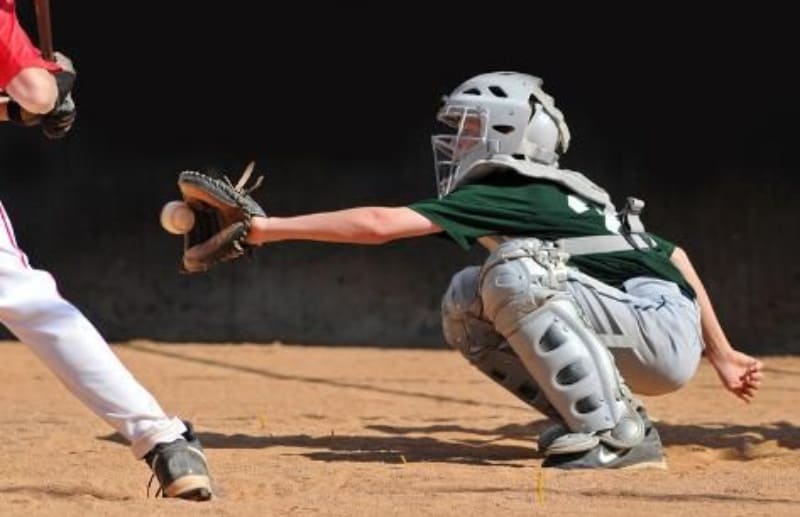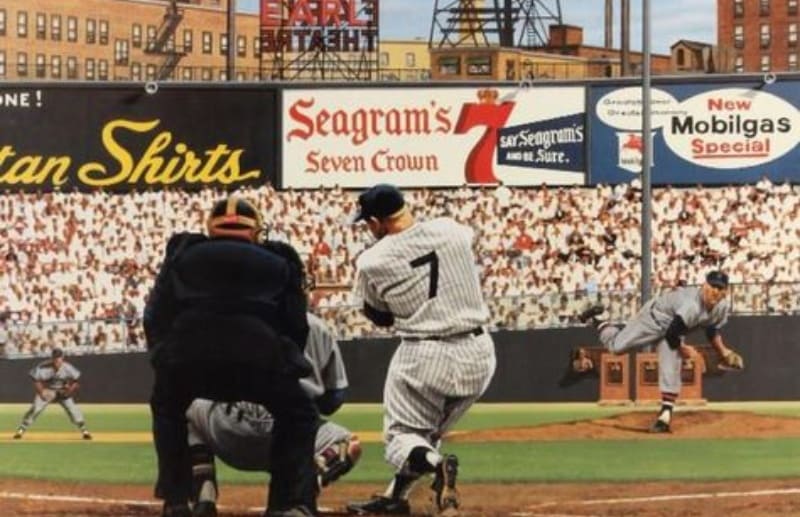Ever heard someone mention the word “WHIP” while watching a baseball match and wondered what it means? You’re not alone. As a new fan of the game, you may hear some confusing expressions at the beginning. WHIP is one of these words.
For those deeply interested in the numbers and statistics of baseball, WHIP is one of the most considerable terms. It’s a numerical value that measures a pitcher’s skill and performance. Still confused? No problem. I’ve got you.
If you want to know more about the WHIP baseball meaning and why it matters, keep reading. In this article, you’ll learn what this word means, why it’s important, and how it can help you understand baseball even more.
What Does WHIP Mean in Baseball?
Baseball is one of the most popular games in America. However, there’s more to such a fantastic sport than just mere entertainment. It consists of endless numbers and statistics signifying a player’s expertise. One of the most vital numbers for pitchers is a WHIP.
Principally, WHIP is an acronym for the sentence “Walks plus Hits per Innings Pitched.” It’s like a basic formula that calculates a specific number, indicating the pitcher’s ability to keep the batter from reaching base.
In other words, it measures how often a pitcher lets batters reach base by walking them or giving up hits.
To put it more simply, WHIP is calculated by adding the number of walks to the number of hits allowed by a pitcher. Then, you divide that number by the number of innings pitched.
For example, if a pitcher scores six walks and two hits in four innings, the WHIP is (6+2)/4, which equals 2.
What Are Walks and Hits?
In a baseball game, walks and hits are two ways batters can reach base. Here’s what each terms refer to:
- Walks: A walk (AKA base on balls) occurs when a pitcher throws four pitches outside the strike zone, and the batter doesn’t swing at any of them. When this happens, the batter gets awarded first base automatically without hitting the ball.
- Hits: A hit happens when the hitter successfully makes contact with the ball thrown by the pitcher and safely reaches base with no errors.

Image source: Pinterest
Why is WHIP Important?
WHIP is one of the most essential and extensively used stats for baseball pitchers. Usually, it’s the first stat mentioned after the ERA. It signifies the pitcher’s ability to prevent opposing teams from scoring runs.
Generally, a lower WHIP means the pitcher is doing a great job keeping runners off the basepath. It’s a key indicator of a pitcher’s skill and effectiveness on the field.
Overall, coaches, scouts, and even fans use WHIP to evaluate pitchers. It’s also one of the ways to compare pitchers’ performances.
What Doesn’t WHIP Indicate?
While it’s a valuable statistic to assess pitchers’ performances, WHIP isn’t a comprehensive indicator of how they play. That’s because it only takes into account the walks and hits surrendered, regardless of the outcome.
For instance, if a fielder throws poorly or makes a mistake, letting a player get on base, this doesn’t count in calculating WHIP.
Additionally, WHIP doesn’t consider the quality of pitches thrown. After all, there’s a huge possibility a pitcher can give up hits or walks on well-executed pitches. It can also be the other way around.
Therefore, using WHIP alone might not tell the whole story about how well a pitcher plays. This is why other stats are essential to look at too.
What Is a Good WHIP in Baseball?
Essentially, the lower the WHIP, the better the pitcher is at controlling the game and giving their team a chance to win. It’s usually expressed as a number (rounded to three decimal places).
For instance, a WHIP of 1.350 means the pitcher allows an average of 1.35 baserunners for the total number of innings pitched. However, is this a good number?
Primarily, a good WHIP in baseball is anything around 1.000 or lower. A low WHIP shows that a pitcher is consistently keeping batters off the bases, which is crucial for having the game under control.
To better understand the number, a WHIP of 1 or lower means that the pitcher allows fewer than one walk or hit for each inning pitched. Most elite pitchers have a WHIP that’s lower than one or equal to it.
Yet, the numbers don’t vary that much. In fact, average to top-tier pitchers may have a WHIP of only 1.200 (or slightly higher). For a performance to be considered poor, a pitcher must have a WHIP of 1.400 or above.
That said, WHIP can vary depending on several factors.
Image source: Pinterest
Factors Affecting a Pitcher’s WHIP
In the course of a baseball season, a pitcher’s WHIP fluctuates. The overall WHIP score depends on how well in control the pitcher is and the skill of the accompanying defense.
Take a closer look at some of the factors influencing a pitcher’s WHIP:
- Pitching Control: Pitchers’ ability to control throws and achieve strikes impacts their WHIP significantly. The more walks a pitcher allows, the higher the possibility of an increasing WHIP baseball stat. Contrarily, the more command a pitcher has, the lower their WHIP.
- Pitching Velocity and Movement: Pitchers who excel at throwing harder balls make it more challenging for batters to hit solidly. Consequently, they allow fewer hits and achieve lower WHIP. Such players are often skilled and experienced enough to have such excellent command.
- Pitch Selection and Strategy: The choice of pitches can also affect the total WHIP. Naturally, pitchers who can execute a breaking ball or off-speed pitch successfully induce more swings and misses, resulting in fewer hits allowed.
- Defense: The quality of the defense players behind the pitcher can also influence WHIP greatly. A strong defense team is always better at converting batted balls into outs, which lowers the number of hits allowed.
- Ballpark Factors: The dimensions, weather conditions, and other characteristics of the ballpark can also influence WHIP remarkably. Pitchers may perform differently in ballparks with larger outfields than smaller ones, depending on whether the area is pitcher- or hitter-friendly.
- Opponent Skill: Besides the pitchers’ proficiency, the skill level of the opposing hitters can also affect WHIP. Playing against a strong offensive team with talented hitters can increase pitchers’ WHIP, no matter how skilled they are.
Who Are the All-Time Best Pitchers With the Lowest WHIP?
Throughout baseball’s history, fans have witnessed inspiring performances from legendary pitchers. Such characters have left a significant impact on the game with how well they could pitch.
Take a look at some of the unforgettable names in baseball and what their WHIP score is:
1. Addie Joss
Addie Joss was an incredible pitcher who played in the early 20th century. He was famous for his pinpoint accuracy and ability to keep batters from scoring.
Joss holds the record in Major League Baseball history for the lowest career WHIP, which is a jaw-dropping 0.967. This means he hardly ever lets batters reach base, which is super impressive!
Image source: Pinterest
2. Jacob DeGrom
Jacob deGrom is an active player, and he’s one of the top pitchers in baseball today. He plays for the New York Mets and is famous for his remarkable talent on the mound. So far, his career WHIP stands at an astounding 0.993.
During his years of playing baseball, he’s won two National League Cy Young Awards.
3. Ed Walsh
Another early 20th-century pitcher was Ed Walsh, who played for the Chicago White Sox. He’s widely regarded as one of the greatest pitchers of all time for his exceptional skill. Walsh had an incredibly low career WHIP of about 0.999, which is also outstanding.
Because he had a strong stature, Walsh earned the nickname “Big Ed.” As a pitcher, he was famous for his spitball pitch, which was almost impossible for batters to hit.
4. Mariano Rivera
Rivera was one of the best relief pitchers in baseball history. He was known for his amazing ability to close out games and secure wins for his team.
The amazing player was active in the period between 1995 and 2013, playing for the New York Yankees. He finished his career with a WHIP of 1.000 as well.
Final Thoughts
By now, you should have a better understanding of the WHIP baseball meaning and why it’s such an important stat in baseball. It’s a number that gives insight into a pitcher’s ability to keep batters off base and control the game.
However, it’s not the only value to consider when evaluating a player’s performance. Factors like pitching control, defense, and opponent skill play a big role as well. Looking at all these factors together, a person can get a clearer picture of how well a pitcher is doing.
So, the next time you hear the term “WHIP,” you’ll know why it matters and how it fits into the bigger picture of the game.

